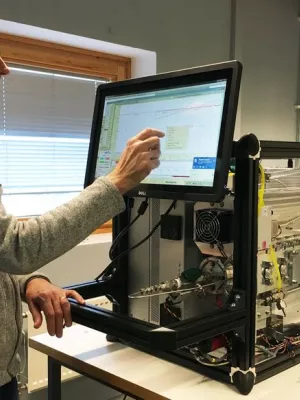
Erik Swietlicki
Professor

Aerosol ageing in an urban plume - implication for climate
Author
Summary, in English
The climate effects downwind of an urban area resulting from gaseous and particulate emissions within the city are as yet inadequately quantified. The aim of this work was to estimate these effects for Malmo city in southern Sweden (population 280 000). The chemical and physical particle properties were simulated with a model for Aerosol Dynamics, gas phase CHEMistry and radiative transfer calculations (ADCHEM) following the trajectory movement from upwind of Malmo, through the urban background environment and finally tens and hundreds of kilometers downwind of Malmo. The model results were evaluated using measurements of the particle number size distribution and chemical composition. The total particle number concentration 50 km (similar to 3 h) downwind, in the center of the Malmo plume, is about 3700 cm(-3) of which the Malmo contribution is roughly 30%. Condensation of nitric acid, ammonium and to a smaller extent oxidized organic compounds formed from the emissions in Malmo increases the secondary aerosol formation with a maximum of 0.7-0.8 mu gm(-3) 6 to 18 h downwind of Malmo. The secondary mass contribution dominates over the primary soot contribution from Malmo already 3 to 4 h downwind of the emission sources and contributes to an enhanced total surface direct or indirect aerosol shortwave radiative forcing in the center of the urban plume ranging from -0.3 to -3.3 Wm(-2) depending on the distance from Malmo, and the specific cloud properties.
Department/s
- Nuclear physics
- Ergonomics and Aerosol Technology
- MERGE: ModElling the Regional and Global Earth system
Publishing year
2011
Language
English
Pages
5897-5915
Publication/Series
Atmospheric Chemistry and Physics
Volume
11
Issue
12
Full text
Document type
Journal article
Publisher
Copernicus GmbH
Topic
- Production Engineering, Human Work Science and Ergonomics
- Subatomic Physics
Status
Published
ISBN/ISSN/Other
- ISSN: 1680-7324